The Vassar Vanguard
In spite of, or perhaps because of, its liberal arts foundation, Vassar has produced an amazing number of pioneers across an impressively diverse spectrum of fields. Their accomplishments, far from simply being impressive in their own right and within their own sphere of influence, have had lasting impacts on the world in which we live.
Crystal Eastman ’03
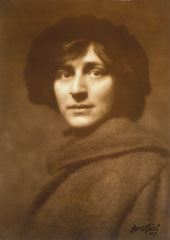
After graduating from Vassar in 1903 and NYU Law School in 1907, Eastman set her sights on the plight of workers and workplace accidents. Her landmark book, Work-Accidents and the Law, published in 1910, was a scathing indictment of employers’ disregard for the health and safety of their employees.
Her book aroused the public conscience, laying bare the fact that workers bore a disproportionate amount of the economic hardship from workplace accidents. She set out to rectify that imbalance, arguing that if employers had better economic incentive to eliminate workplace hazards, they would do so (for example, via lower insurance premiums for more safety measures, fewer hazards, and better safety records).
To wit, Eastman drafted New York’s first worker’s compensation law, adopted initially in 1910, and then again in a new and improved form in 1913. It was one of the very first such laws in the country, and served as a model for others to follow.
Eastman didn’t stop there. During WWI she cofounded that National Civil Liberties Bureau, which later became the American Civil Liberties Union. And following the passage of the 19th amendment in 1920, which gave women the right to vote, Eastman coauthored the first Equal Rights Amendment.
Mary Steichen Calderone ’25
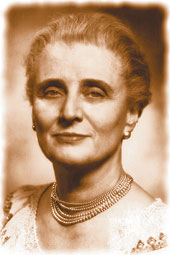
Known as the grandmother or “grand dame” of sex education, Calderone brought a positive outlook on sex and sexuality to the national conversation. Sometimes vilified by conservatives and certain religious groups, she advocated for improved, morally neutral sex education.
In 1953, she joined Planned Parenthood as medical director, a position she held until 1964. During those years she accomplished perhaps her greatest coup—convincing the American Medical Association to overturn its long-standing opposition to birth control.
Seeking to further her sex ed agenda, Calderone founded SIECUS—the Sexual Information and Education Council of the United States—in 1964, the same year she left Planned Parenthood. Together, Calderone and SIECUS focused on disseminating accurate information about sex and sexuality for both young people and adults.
Ellen Kovner Silbergeld ’67
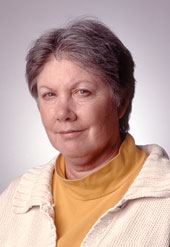
Silbergeld’s résumé reads like a highlight reel for the field of environmental health and safety. Former senior scientist for the Environmental Defense Fund. Scientific adviser to the Environmental Protection Agency, Occupational Safety and Health Administration, Department of Energy, United Nations Environment Programme, the World Bank, and New York State, to name a few. Editor-in-chief of the journal Environmental Research. MacArthur fellow. And professor at Johns Hopkins University’s Bloomberg School of Public Health.
All of it started with one simple question: Why do kids eat paint? Silbergeld picked a flake of paint off a windowsill and put it in her mouth. It was sweet. That eureka moment, and the cascade of research and discoveries that followed, brought to light the traumatic and devastating neurological health effects of lead exposure from sources such as household paint.
Silbergeld’s conviction to do something about the problem made her a champion for environmental and public health and safety, a stance that hasn’t always made her popular with certain administrations, as when George W. Bush’s administration fired her from a Centers for Disease Control Advisory Board. But with lead exposure—and its negative health consequences—a fraction of what they once were, Silbergeld has the gratitude of generations of parents.
Barbara Coombs Lee ’69
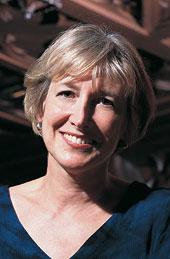
An English major at Vassar, Coombs Lee spent the first 25 years of her career as a nurse practitioner and physician assistant. She then earned her juris doctor to embark on a career shift toward the nexus of law and health policy. Coombs Lee was especially focused on individual choice and empowerment in health care, including end-of-life decisions.
In the early-mid 1990s, she was a coauthor and the chief petitioner of Oregon’s Death with Dignity Act, passed by voters in 1994 and enacted in 1997. For years it was the nation’s only aid-in-dying law. It allows terminally ill Oregonians to end their lives through voluntary self-administration of lethal medication, expressly prescribed by a physician for that purpose. The law has thus far survived numerous legal challenges, and at least four other states have since affirmed patients’ rights in making end-of-life choices.
Today, Coombs Lee serves as president of Compassion & Choices, a non-profit founded in 1994—the same year the Oregon legislation passed—to aid terminally ill individuals in Washington State. Its present-day mission is national in scope, supporting patients and their families, educating lawmakers, the media and public, and advocating for legal and legislative initiatives that advance its cause.
Claudia Lynn Thomas ’71
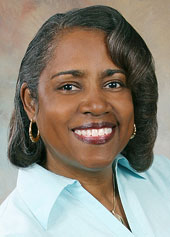
Known within Vassar circles for her prominent role in the 1969 student takeover of Main, Thomas graduated with a degree in Africana Studies (then called Black Studies). Post-Vassar, she earned her MD from Johns Hopkins University, and completed her orthopedic surgery residency at Yale-New Haven Hospital, becoming the first black person and first woman admitted to the program. When she at last entered the field as a practitioner, she had become the first black female orthopedic surgeon in the country. An active medical practitioner in Florida, Thomas is the recipient of the American Academy of Orthopedic Surgeons’ Diversity Award. She chronicled her accomplishments—and overcoming of adversity, including kidney cancer—in her memoir, God Spare Life, published in 2007.
Richard “Ricky” Roberts ’74
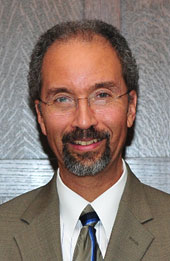
As an African American male in Vassar’s first coed graduating class, Roberts knows a thing or two about breaking through barriers and upsetting the status quo. The would-be math major switched his academic focus to law, partly driven by a deep-seated motivation to see equality and justice prevail, a motivation strengthened by New York’s Attica prison riots in 1971, at the start of Roberts’s sophomore year.
After serving as a principal assistant U.S. attorney, Roberts became chief of the criminal section of the Civil Rights Division of the U.S. Department of Justice. In just his second court case as a prosecutor in that role, Roberts successfully convicted a former Klansman of the racially-motivated sniper shootings of two young black men who were jogging with two white women in a Salt Lake City park.
Since 1998, Roberts has served as a federal judge in the U.S. district courts. He was in the news in recent years for his court order forbidding the CIA from destroying tapes of interrogations that used techniques such as waterboarding. The CIA subsequently destroyed that evidence in direct violation of his court order, prompting a firestorm of media criticism and governmental scrutiny. Roberts, meanwhile, remains an arbiter for good, protecting people’s rights from abuses.
Paco Underhill ’75
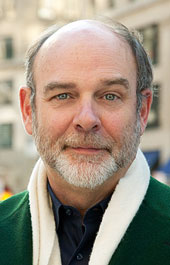
Questions such as what percentage of men who take jeans into a fitting room in a department store will actually buy them, and at what time of day are people most likely to buy a computer, are big business. Paco Underhill, a “shopping anthropologist” and leading expert on consumer trends, has the answers.
He is the founder, CEO and president of Envirosell, a company that analyzes shopping behavior for clients ranging from McDonald’s and Starbucks to Bloomingdales and Estee Lauder. His unique insights into consumer purchasing decisions has garnered him much attention in the pages of the New York Times, Washington Post, Wall Street Journal, Money magazine, Fortune, Smithsonian magazine, and Fast Company, not to mention appearances on 20/20 and 48 Hours.
Underhill shares some of his wisdom in Why We Buy: The Science of Shopping, which has sold more than 100,000 copies since its publication in 1999. More recently he wrote Call of the Mall: The Geography of Shopping, a humorous look inside the ultimate American retail establishment. In 2010 he published his third book, What Women Want, which prompted the San Francisco Chronicle to label him “Sherlock Holmes for retailers,” while The Oregonian called him a “guru for retail consulting.”
Adam Green ’95
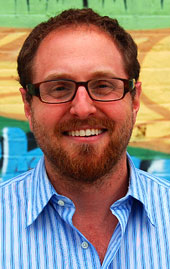
Adam Green could never have predicted that a semester spent as an intern aboard the Hudson River sloop Clearwater would morph into a remarkable story of social change upon his graduation in the mid-1990s. In 1996, he launched a volunteer boatbuilding project for junior high school students at the East Harlem Maritime School. The boat that came of the project – The Dolphin – tested her seaworthiness in the pool in the school’s basement
Another, larger project for high school students followed that one, followed by yet another, each time building a wooden boat from scratch. All the while, these programs—held during school, after school, and over the summer—were drawing growing numbers of youth from economically, educationally and socially disadvantaged groups. Through boatbuilding projects, Green taught students self-confidence and the skills they needed to achieve newly forming aspirations.
Along the way, his work caught the attention of the New York Times and CNN. The Echoing Green Foundation awarded Green a fellowship. A Union Square Award followed, as did a Manhattan Institute Social Entrepreneurship Award.
In June 2001, Rocking the Boat – Green’s Bronx-based non-profit that oversees such projects – was born. As it celebrates its 10th anniversary in 2011, it counts 13 full-time and 10 part-time staff, including Green as executive director. But perhaps most importantly, its boatbuilding, environmental education, on-water classroom, and public rowing programs now reach more than 2,500 inner city youth each year.
